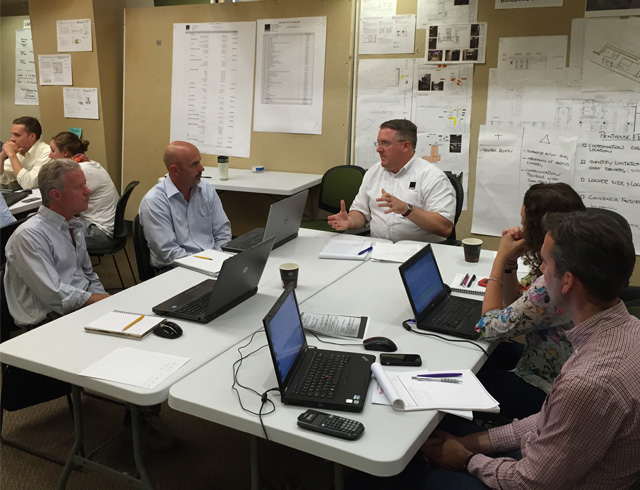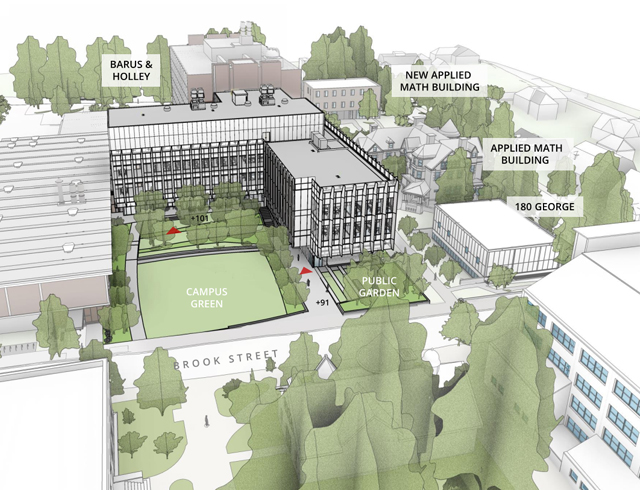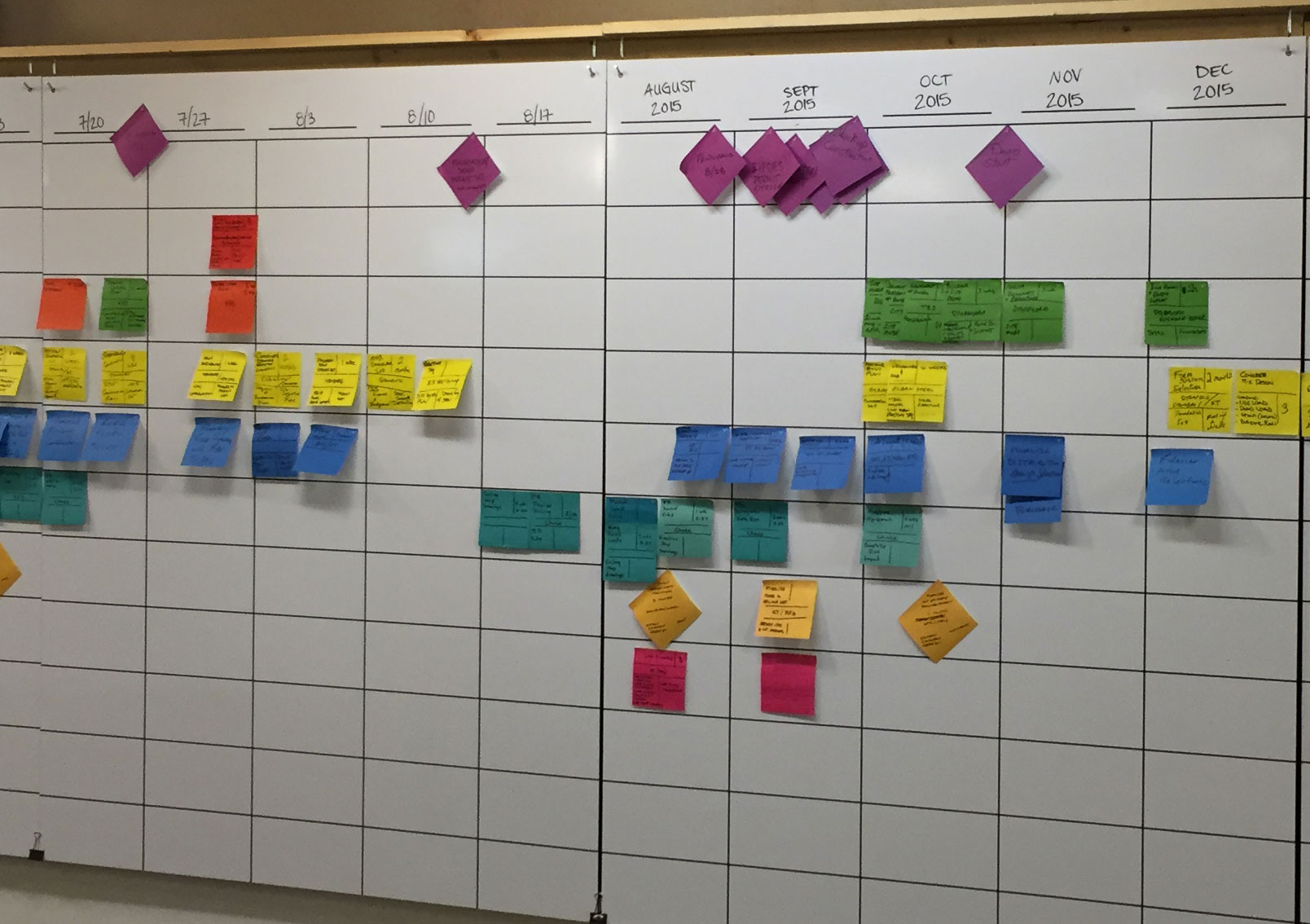"Big Room" Fosters Collaboration at Brown
The structural PIT (Project Implementation Team) meets for a collaboration session at the co-location site on the campus of Brown University.
Integrated Project Delivery (IPD) is an evolving discourse that offers an alternative to the traditional design-bid-build model of creating a new building from design through construction. With the traditional sequential model, an architect designs the building, then construction contractors bid on the job, and finally the building is constructed. Design and construction teams generally remain distinct and distant from one another. By contrast, IPD methodology utilizes a parallel process, which dictates that the entire project team—from owner to architect to construction manager, consultants, and subcontractors—come together at the start of the design process and develop the project jointly through continuous collaboration. Contractually, all participants are bound together as equals, and behavioral principles require mutual respect and trust, willingness to collaborate, and open communication.
The American Institute of Architects (AIA) says that “IPD motivates collaboration throughout the design and construction process, tying stakeholder success to project success.” In other words, each stakeholder is more deeply embedded in all aspects of the process, and his or her input and collaboration is likewise integral to the project's success.
An axon shows the proposed School of Engineering building in situ at Brown University.
At Brown University, where the design of a new School of Engineering research building is underway, a co-location space on campus serves as a “big room” where all parties can convene in person to work together throughout the IPD process. Retrofitted within a decommissioned on-campus cafeteria, the big room was designed using the KieranTimberlake studio as an open-office model, with furniture and conference room partitions on wheels to allow for easy reconfiguration of the space depending on the specific needs of the project team.
Interdisciplinary work groups, known in IPD as Project Implementation Teams, or PITs, comprise representatives from each stakeholder group and are assembled as needed to tackle specific design and construction issues. Each team is responsible for managing the progress and budget of its scope of work and is coded to a specific color. A task board with sticky notes corresponding to each team's color allows everyone to track progress on these issues as the project evolves and to remain accountable for providing critical coordination information to other PITs. At weekly meetings, the teams come together to review the status of all aspects of the project and to make any needed decisions.
A color-coded IPD task board helps track progress on the many facets of the Brown School of Engineering project.
The design team is using Autodesk A360 Collaboration for Revit in order to share access to the Building Information Model (BIM) hosted in the cloud. Under a traditional process, the architect retains control over and responsibility for the BIM, but with the IPD process, updates go out to everyone on the project team as design changes are made, creating a greater alignment and understanding of how the project is evolving.
Benefits of this process are many:
- Project stakeholders are not siloed from one another.
- Costs are reduced by eliminating redundancy.
- The design process is condensed into a single live model, eliminating many issues in the field.
- Direct contact with trade partners/subcontractors creates opportunities for helpful feedback and a larger pool of information to make decisions.
Ultimately, the greatest promise of IPD is a synergistic process in which the designers, owner, and construction managers are working fluidly to create a “project culture” that supersedes the individual cultures of the respective parties. Feedback loops are tangible and immediate, and opportunities for improvement are vetted in real time by the team working together to identify an optimum solution.






